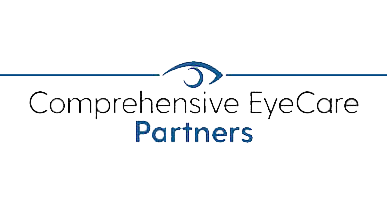LASIK has become very popular, and it’s easy to see why. The vision correction procedure can eliminate the need for glasses or contact lenses in qualified patients.
Moreover, it’s a quick outpatient procedure with very high success rates. Because LASIK reshapes the cornea permanently, patients can look forward to many years of crisp, clear vision.
But what about teenagers? Should they have LASIK? While LASIK is a life-changing procedure, it’s not recommended for teenagers.
Keep reading to learn more about LASIK and why teenagers shouldn’t have the vision correction procedure.
What is LASIK?
LASIK is a laser vision correction procedure that corrects refractive errors like nearsightedness, farsightedness, and astigmatism. It does this by reshaping the cornea so light can focus properly on the retina.
After LASIK, most people can see more clearly without needing glasses or contact lenses. LASIK also corrects your vision beyond your original prescription, so most patients end up with 20/20 vision or better after the procedure.
Why Teenagers Can’t Have LASIK
Unfortunately, if your teenager wants LASIK, they aren’t able to undergo the vision correction procedure. According to FDA guidelines, you must be at least 18 to undergo the procedure. Here’s why:
1. Stable Prescription

To undergo LASIK, your teen’s vision must remain stable for at least a year or more. However, teenagers experience many changes in their bodies, including their eyes.
These changes cause their prescription to keep changing, even if they want a procedure like LASIK. A fluctuating glasses or contact lens prescription means your teen is not yet ready for LASIK.
Part of the reason why LASIK is not recommended for teenagers is because the eyes are not finished developing until the early to mid-twenties. Vision stabilizes when the eye is done with its development at this time. Getting LASIK while the eyes are still changing would make the procedure less successful.
LASIK improves vision by correcting any refractive errors your teenager may have. If they have LASIK while their vision is still changing, there’s a good chance that their eyesight could change after LASIK.
Because of this, the results of the laser eye procedure may be short-lived. Teenagers getting LASIK would likely need glasses and other visual aids again, making LASIK a costly and ineffective procedure to undergo.
LASIK surgeons recommend patients only get LASIK once someone’s prescription has been stable for at least a year. A stable prescription is a good indication that LASIK will be effective and the results will be long-lasting.
2. FDA Age Limits

As per the regulation by the Food and Drug Administration or FDA, a person should be at least 18 years old to have LASIK. If someone is below this age, they cannot undergo LASIK.
The FDA has these age limits in place because a patient’s vision might continue changing until that time. Additionally, there are no lasers that are currently approved for LASIK on teenagers under the age of 18.
Being 18 isn’t a magic number for teenagers who want LASIK, either. You can be 18 and still have eyes that are developing, meaning you may not be a good LASIK candidate.
Most LASIK surgeons prefer that their patients wait until they’re 21 or older before getting LASIK. By then, most young adults’ eyes will have stopped growing and changing, making LASIK more successful.
3. The Cornea Can’t Be Treated Safely Multiple Times

Most patients only need one LASIK procedure to correct their vision permanently. But if your teenager undergoes LASIK while their eyes are still changing and are not yet stable, their vision could change as they get older.
Getting LASIK or other eye procedures multiple times impacts the cornea. Although LASIK is a safe procedure, reshaping the cornea over and over again runs the risk of the cornea becoming thinner.
Your LASIK surgeon will have less tissue in the cornea to work with if a patient has had multiple procedures. Requiring additional procedures may increase the risk of certain complications like halos and astigmatism, among others.
Patients can ensure they get the best possible results when they have LASIK by undergoing limited treatments to the cornea rather than relying on correcting their vision too early.
However, the LASIK surgeon will have less corneal tissue to work with after the original LASIK procedure. The main risk with a LASIK enhancement is the cornea could become much thinner.
4. Hormones Play a Part in Stable Vision

A large part of being a teenager is going through puberty and hormonal changes. These hormones cause a great deal of development and growth in your teenager’s body.
Among these is eyeball lengthening, which changes your teen’s eyesight. For this reason, patients should be at least 18 years old to get LASIK to eliminate the risk of hormonal changes.
Many LASIK surgeons prefer patients already in their twenties because their vision is less likely to change after LASIK. Waiting for a stable prescription first will allow your teenager to have LASIK when they are ready for the procedure.
Although they will need to delay having LASIK, it’s well worth the wait to have the vision correction procedure.
Are You a Good LASIK Candidate?

Although your teenager may want LASIK, they’ll need to wait to have the vision correction procedure. Good LASIK candidates are over 18, have a stable prescription that’s remained unchanged for a year or more, and are not currently pregnant or nursing. If you’re not a good candidate for LASIK, there are alternative procedures you may be a better fit for, like the ICL or PRK.
Ready to find out if you may be a good LASIK candidate? Request your LASIK consultation at Evergreen Eye Center now!

